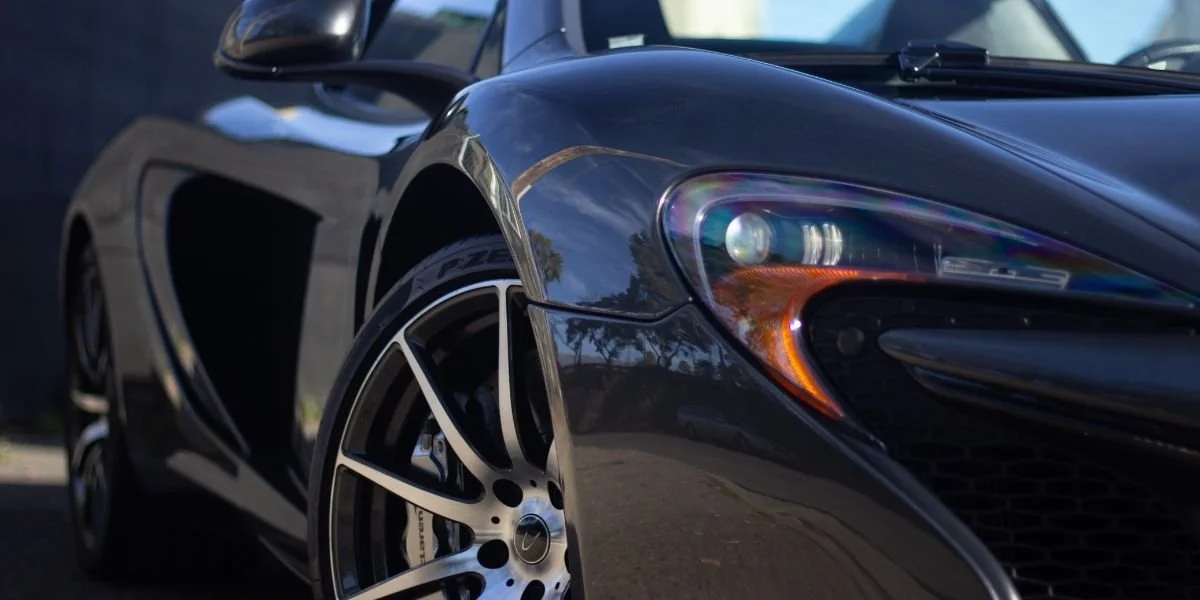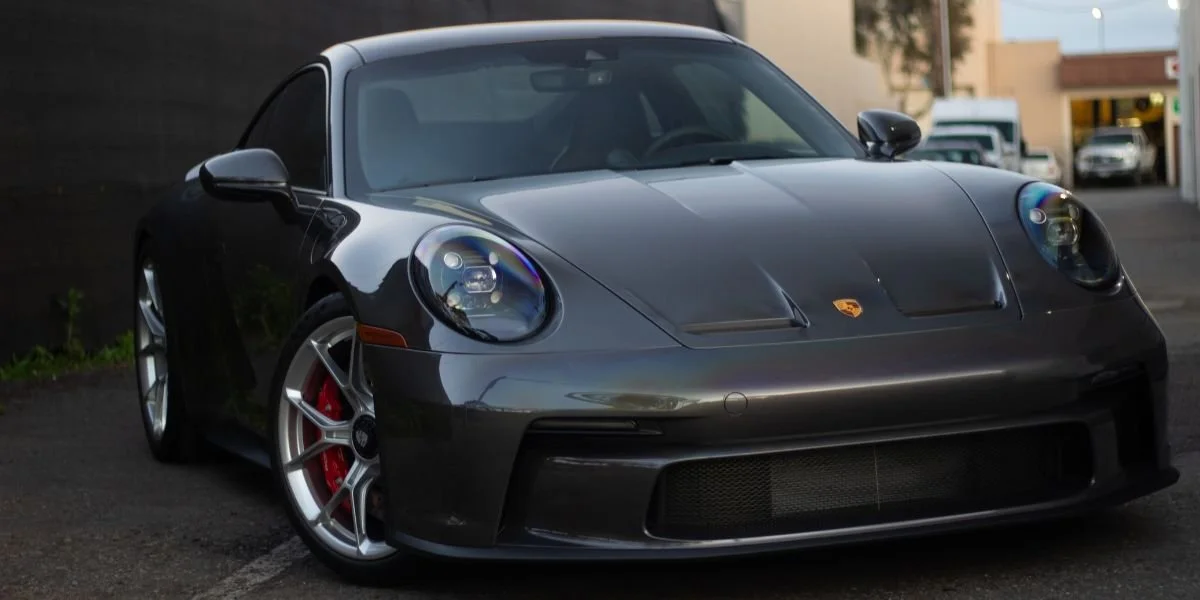Whether you drive a sleek black sports car or a vibrant red sedan, choosing the right ceramic coating can make the difference between good protection and exceptional results that turn heads wherever you go. Ceramic coatings offer superior protection compared to traditional waxes and sealants, but not all coatings work the same way on every paint type. Understanding how to select ceramic coatings for different car finishes allows you to make an informed decision that preserves your vehicle’s beauty.
The right ceramic coating transforms your daily driving experience. No more worrying about water spots after a rainstorm or spending hours scrubbing away stubborn contaminants. Instead, you’ll enjoy a vehicle that maintains its showroom shine with minimal effort, allowing you to focus on what matters most—enjoying the road ahead.
Understanding Different Car Paint Types
There are several distinct paint systems for vehicles, each with unique characteristics that affect ceramic coating selection. Single-stage paint, commonly found on older vehicles, combines color and clear coat into one layer. This paint type requires gentle handling during preparation and benefits from coatings designed for direct adhesion to pigmented surfaces.
Multi-stage paint systems separate the color base coat from the protective clear coat. Most contemporary vehicles use this system because it provides superior durability and allows for more complex color effects like metallics and pearls. These finishes typically accept ceramic coatings more readily due to their stable clear coat surface.
Specialty finishes present unique challenges and opportunities for ceramic coating. Matte and satin finishes require specific coating formulations that preserve their distinctive low-gloss appearance while providing protection. Pearl and metallic finishes benefit from coatings that enhance their depth and shimmer without masking their visual effects.
Matching Coating Hardness to Your Car’s Paint
Coating hardness impacts both protection level and application success. Softer coatings, typically rated between 7H and 8H on the pencil hardness scale, work well on delicate finishes and vehicles that require frequent maintenance access. These formulations offer excellent self-healing properties and easier removal if needed.
Medium hardness coatings (8H–9H) provide the sweet spot for most applications. They deliver substantial scratch resistance while maintaining workability during installation. These coatings suit daily drivers that encounter typical road hazards but do not require extreme durability measures.
Ultra-hard coatings (9H and higher) offer maximum protection for high-end vehicles and those that experience harsh operating conditions. However, the coatings’ increased hardness demands expert application techniques and may require professional removal. Consider these premium options only when your vehicle faces severe environmental challenges or represents a significant investment requiring the ultimate protection.
Considering Color-Specific Coatings
Dark colors, particularly black and deep blues, showcase every imperfection, but they also highlight ceramic coating most dramatically. These finishes benefit from coatings with excellent optical clarity and superior scratch resistance, so look for formulations specifically designed to enhance gloss and depth on dark surfaces.
Light colors like white, silver, and beige hide minor imperfections better but can appear dull without proper enhancement. Coatings for light colors should focus on UV protection and contamination resistance rather than purely visual enhancement. These colors also benefit from coatings with hydrophobic properties that prevent water spotting on their more porous-appearing surfaces.
Metallic and pearl finishes require special attention to preserve their unique visual effects, as standard coatings may flatten or dull these finishes’ distinctive sparkle and depth. Choose coatings formulated to work with metallic flakes and pearl particles without interfering with their light-reflecting properties.
Comparing Professional and DIY Coatings
Professional-grade ceramic coatings offer superior durability and performance but require expert application in controlled environments. These multi-layer systems often include primer coats, base coats, and top coats that work together for maximum protection and longevity.
Consumer-grade coatings prioritize ease of application while still providing meaningful protection. These single-component systems work well for enthusiasts who are comfortable with performing detailed automotive work. However, they typically offer shorter lifespans and may require more frequent reapplication than professional systems.
Consider your skill level, available tools, and workspace conditions when choosing between professional and DIY options. At SE Autostyling, we offer professional application of ceramic coating for cars in Santa Barbara, CA. Our processes ensure optimal results, especially for valuable vehicles or challenging finishes that demand expert handling.
Accounting for Environmental Factors That Affect Coating Choice
Your local climate significantly influences your coating selection priorities. Cars in coastal areas with high salt exposure require coatings with superior chemical resistance to prevent etching and corrosion. Vehicles in UV-intensive regions benefit from coatings with enhanced radiation protection to prevent paint fading and oxidation.
Additionally, seasonal temperature variations affect coating flexibility and adhesion. Cars in areas with extreme temperature swings benefit from coatings designed to expand and contract without cracking or losing adhesion.
Following Preparation Requirements for Different Finishes
Proper surface preparation leads to ceramic coating success, regardless of your vehicle’s finish type. For instance, fresh paint may need curing time before accepting ceramic protection.
Aged paint often requires paint correction to remove oxidation, swirl marks, and embedded contaminants. The extent of correction needed varies based on the paint’s condition and previous care history. Some finishes may require multiple polishing stages to achieve coating-ready conditions.
Specialty finishes like wraps, PPF (paint protection film), or aftermarket paint jobs need compatibility verification before coating selection. Not all ceramic coatings bond properly with these surfaces and some may cause discoloration or adhesion issues, making accurate selection essential.
Making Your Final Selection
Start by assessing your vehicle’s current condition and your protection goals. A daily driver facing typical road conditions has different needs than a weekend sports car or show vehicle. Match your coating choice to your actual usage patterns rather than aspirational scenarios.
Budget considerations extend beyond initial coating costs. Factor in preparation work, application tools, maintenance products, and potential professional services. Sometimes, investing in professional application saves money long-term by ensuring optimal results and maximum durability.
Research coating manufacturers’ warranties and support systems. Reputable companies will provide detailed application instructions, technical support, and clear warranty terms.
Protecting Your Investment for Years to Come
Selecting the right ceramic coating for your car’s specific finish leads to years of enhanced protection and visual appeal. Take time to evaluate your vehicle’s paint type, your area’s environmental conditions, and your personal preferences before making this important decision.
Remember that even the best ceramic coating requires proper maintenance to deliver its full potential. Develop a care routine that complements your coating choice and preserves your vehicle’s stunning appearance for as long as possible.



